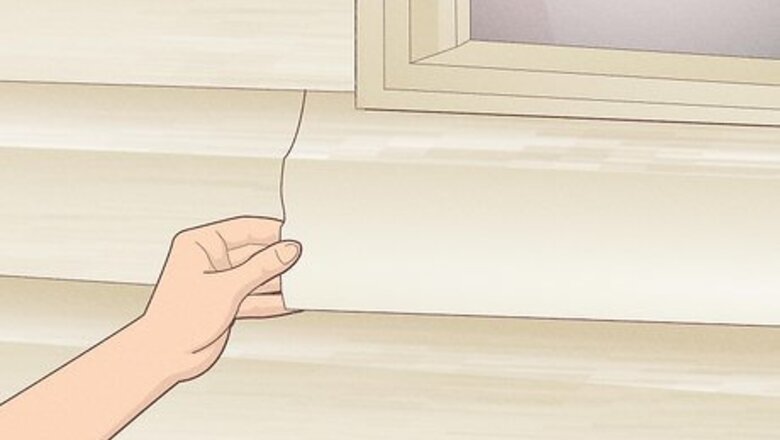
views
Choosing Your Cleaning Method

Check for loose or rotting boards. Replace any boards that show signs of rot. Re-nail boards that are loose. Avoid pressure washing until you’ve made these repairs. Pressure washing loose or rotten boards can push water through your siding and soak into walls. If your siding needs repairs and you’re not comfortable doing them yourself, contact a siding contractor.
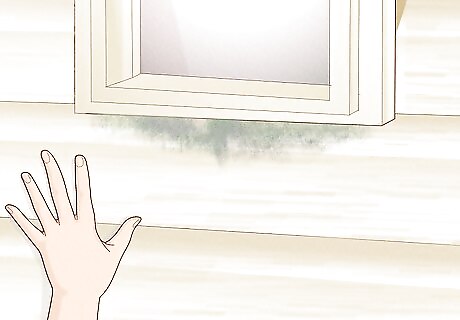
Check your siding for mildew. Look for gray, green or black stains. Examine any grooves, and the bottom of the siding. Look especially on the north side of the house and any places that don’t get much sunlight. A stronger cleanser is needed to destroy mildew. Even pressure washing won’t prevent mildew from quickly growing back.
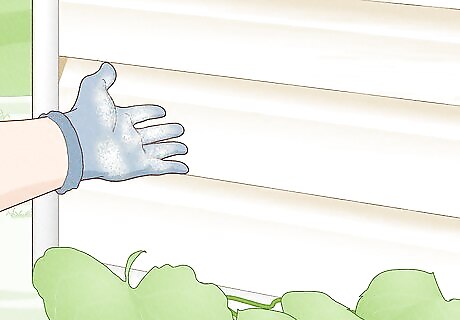
Look for chalking on painted siding. Put work gloves on. Rub your gloved hand on the surface of the siding. Examine your glove for a light-colored powder. Consider pressure washing if you find signs of chalking, dirt or grime.
Brushing Siding with Cleanser
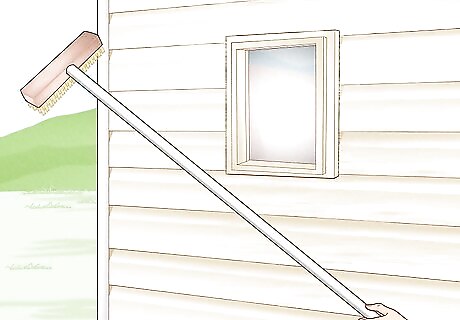
Get an extendable siding brush. Find a brush that extends about eight to twenty feet. Alternately, attach a car wash brush to an extendable pole made for paint rollers. You can purchase an extendable brush specifically for cleaning siding, or use a long pool broom.

Mix cleaning solution in a bucket. Make sure that the head of your brush fits easily into the bucket you choose. Fill the bucket with hot water and a biodegradable detergent, according to the product’s label.Add 3/4 cup of household bleach or vinegar to each gallon of water, if needed. Add bleach or vinegar if your siding shows any signs of mildew. Don’t mix bleach with any cleaner that has ammonia in it. You can use a cleaner specifically for siding, liquid dish detergent, or a cleaner such as Spic and Span.
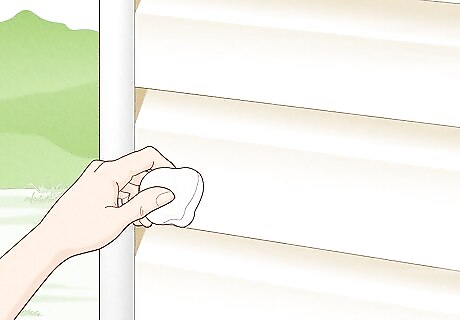
Test your cleaner on an area of siding. Wear gloves if your solution contains bleach or a harsh cleanser. Wet a clean white rag in your cleaner solution. Rub it on a spot of siding and see whether it is potent enough to do the job. You may try up to a few mixtures until you find the right strength to clean your siding. Adjust your mixture as needed, adhering to all safety precautions and instructions of the cleaner(s) you chose. Use eye protection if the cleaner instructs you to.

Protect any plants below the siding, if necessary. Water any shrubs, grass or other plant life near the house first. Spread waterproof tarps or plastic drop cloths over any such plant life. Remove the covers and water the plant life again once you’re finished cleaning and/or power washing your siding. Protect grass or other plants if you’re using bleach or a chemical cleaner.
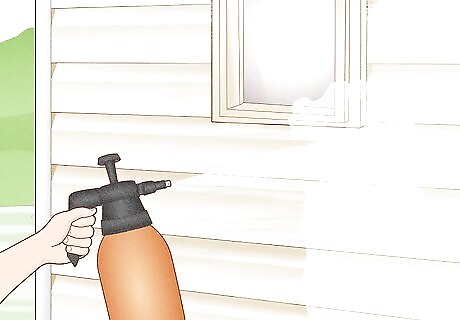
Wet the siding with a garden sprayer, if desired. Fill a garden sprayer with your solution. Spray a portion of the siding about twenty feet wide by the full height of the surface. Let the solution sit for several minutes before brushing that portion of siding. Pre-wetting the siding will cut down on the amount of scrubbing you’ll need to do.
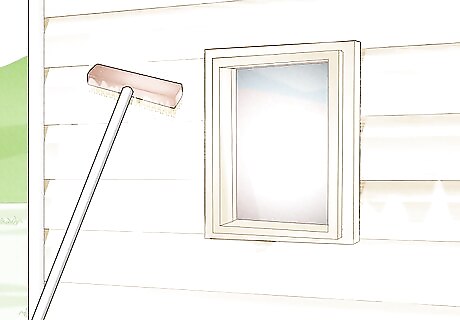
Brush the siding. Submerge your brush in the bucket of cleaning solution. Start at the bottom of the siding and work your way up. Scrub the siding sideways, back and forth. Re-dip your brush in the cleanser as needed. Starting at the top can cause permanent streaking. The siding below the portion you’re scrubbing should stay wet. Rinse as you work so that the siding won’t dry and have contact with dirty solution that drips down.

Spray the siding with a garden hose. Set your hose on a jet stream setting. Rinse the twenty-foot area of siding you just brushed. Start at the top and move downwards.
Pressure Washing Siding
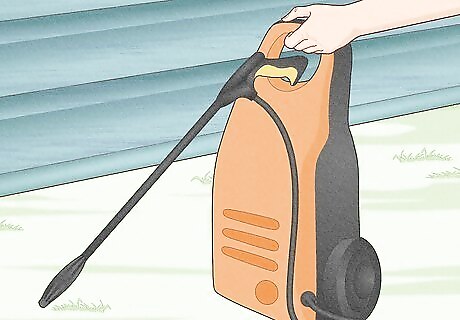
Choose a pressure washer. Obtain a washer that produces pressure of at least 2,000 psi (pounds per square inch). Plan to pick it up with a van, SUV or pickup truck if needed. Consider getting help with loading and unloading it from the vehicle. Talk to the rental agent about how to hook up and operate the washer, and ask for all safety precautions. You can rent a pressure washer at a local home and building supply store. If the washer doesn’t come with nozzles, you’ll have to get them separately. You’ll need fifteen- to twenty-five-degree nozzles.
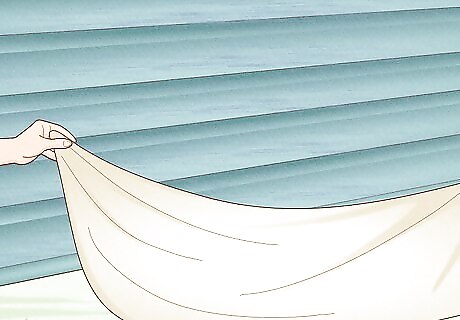
Cover the area. Spread tarp, old sheets, or drop cloths on the ground. Cover any shrubs or plants. If you’re siding is painted, the cloths will protect the ground from paint chips.
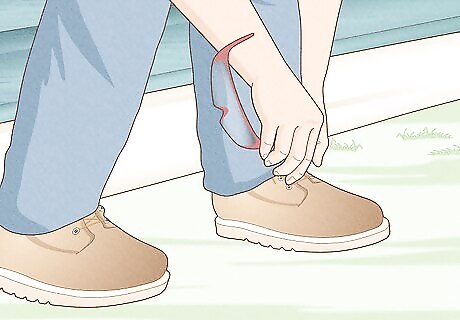
Protect yourself. Wear protective eyewear, strong footwear, and long pants. Follow all instructions and safety precautions for your brand and model of pressure washer. Read the instructions for a pre-operation check, operating procedures, and shutdown procedures. Don’t pressure wash your siding if it’s painted with paint that may have lead in it. It’s vital to protect yourself properly. The spray of a pressure washer is very powerful and hazardous. The force can cause many types of serious injuries. If you’re house was built in 1977 or earlier, or if you’re not sure that it’s lead-free, get the paint tested. Ask your local health department to provide you with safety instructions.
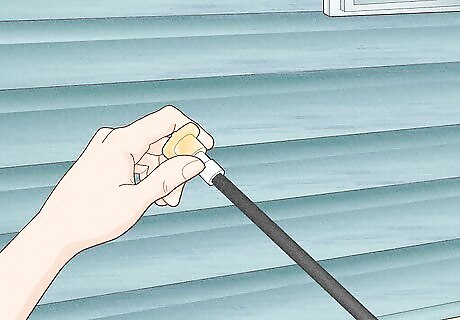
Attach the fifteen degree nozzle. Don’t use settings finer than fifteen degrees. Never use a zero degree nozzle on a pressure washer. Lock the coupling securely in place. If the nozzle is not securely attached, it can shoot off when you turn on the pressure washer.
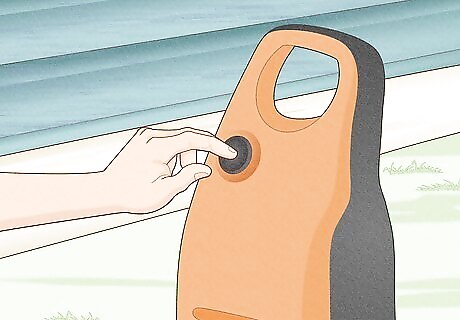
Turn on the pressure washer. Attach the washer to a regular garden hose. Attach the garden hose to your outdoor faucet. Start the engine.

Practice using the washer from about two feet away. Move closer as you find the best distance. Spray horizontally or at an angle slightly downward. Proceed with caution when using a pressure washer, which can dent siding or peel off its finish.
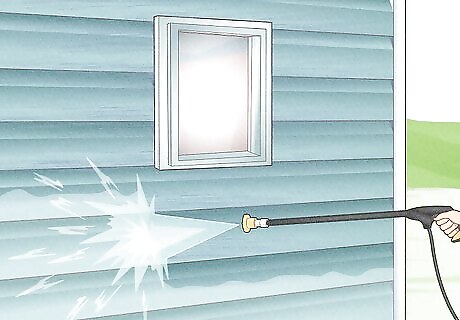
Scrub the siding or move to a higher pressure, if needed. If a low pressure wash isn’t working well, scrub the siding with a soap solution and follow up with a low pressure rinse. Alternately, do a test wash with a twenty-five degree nozzle in an area of siding that isn’t very visible. Make sure no damage occurs to the siding before continuing a full wash. Proceed with a high pressure wash at the risk that you may damage the test area of siding.
















Comments
0 comment